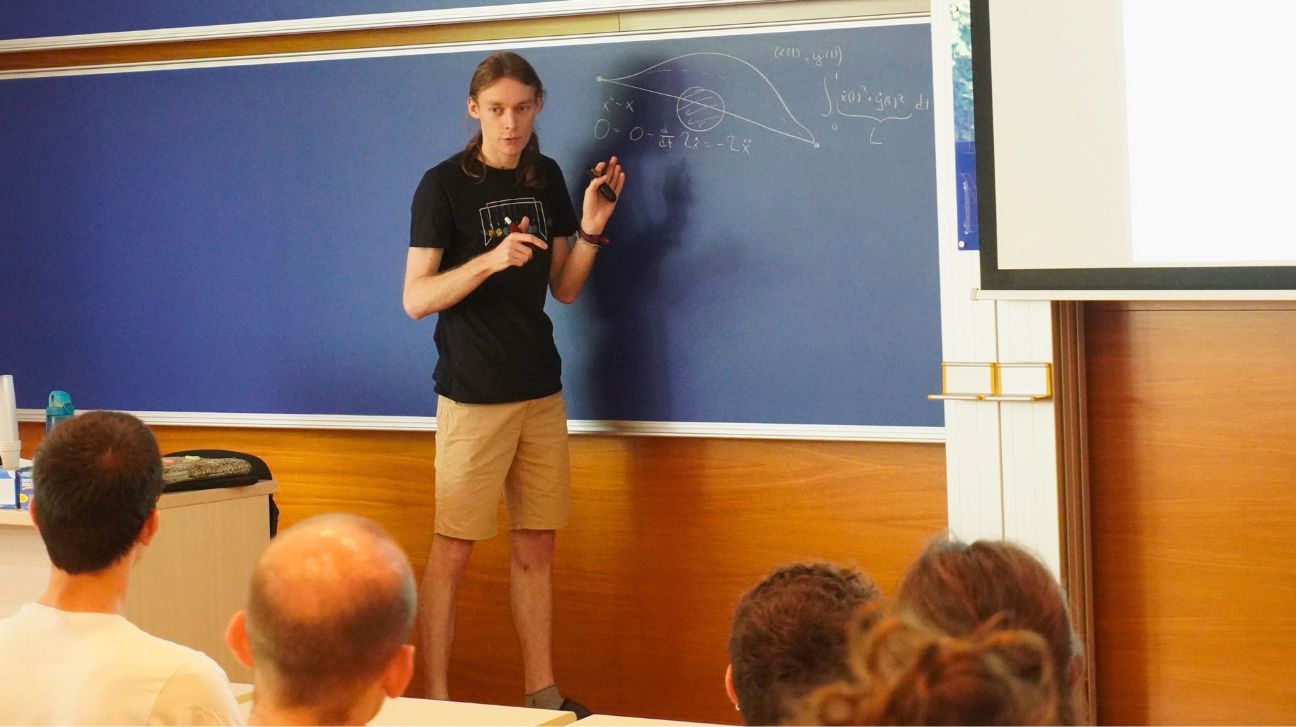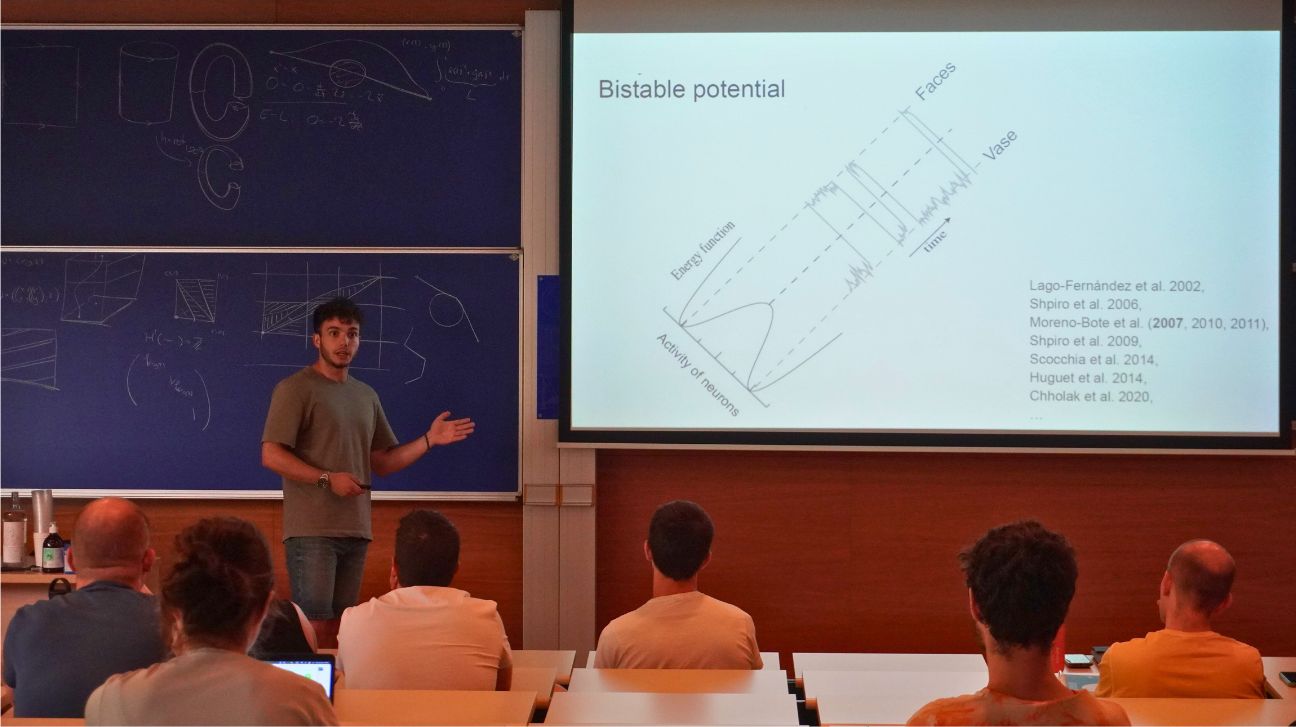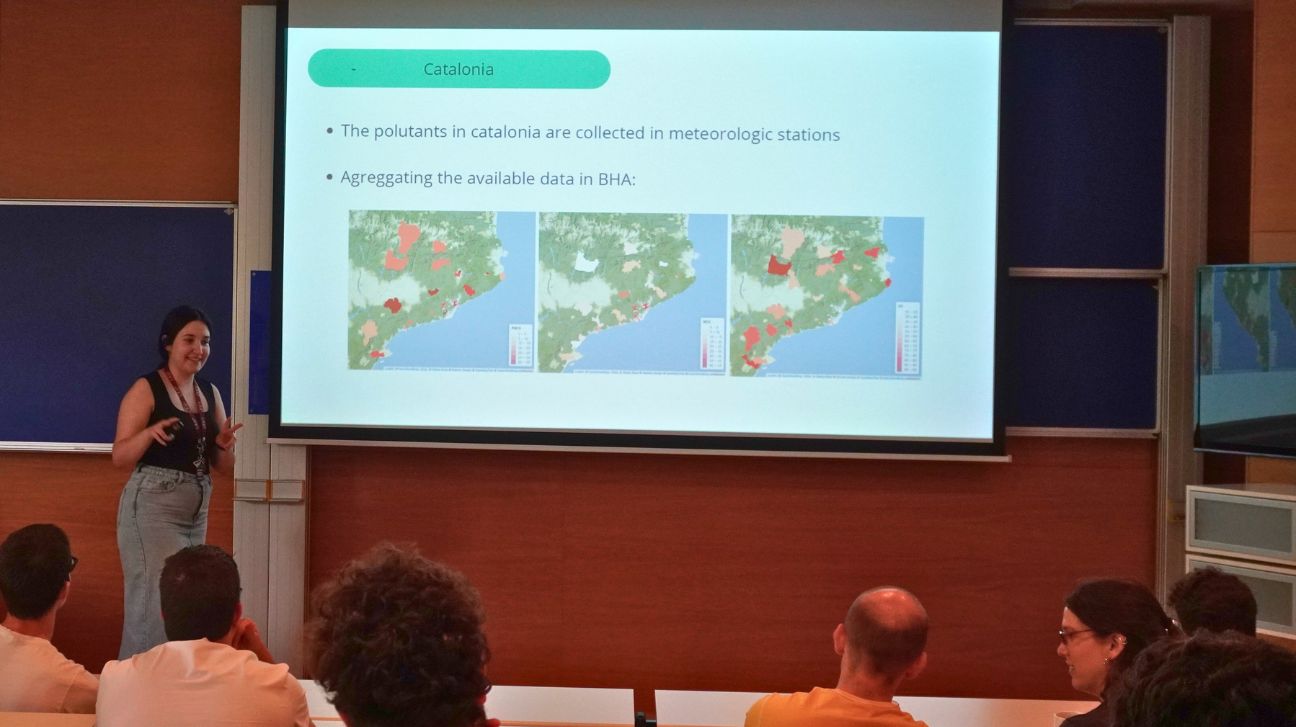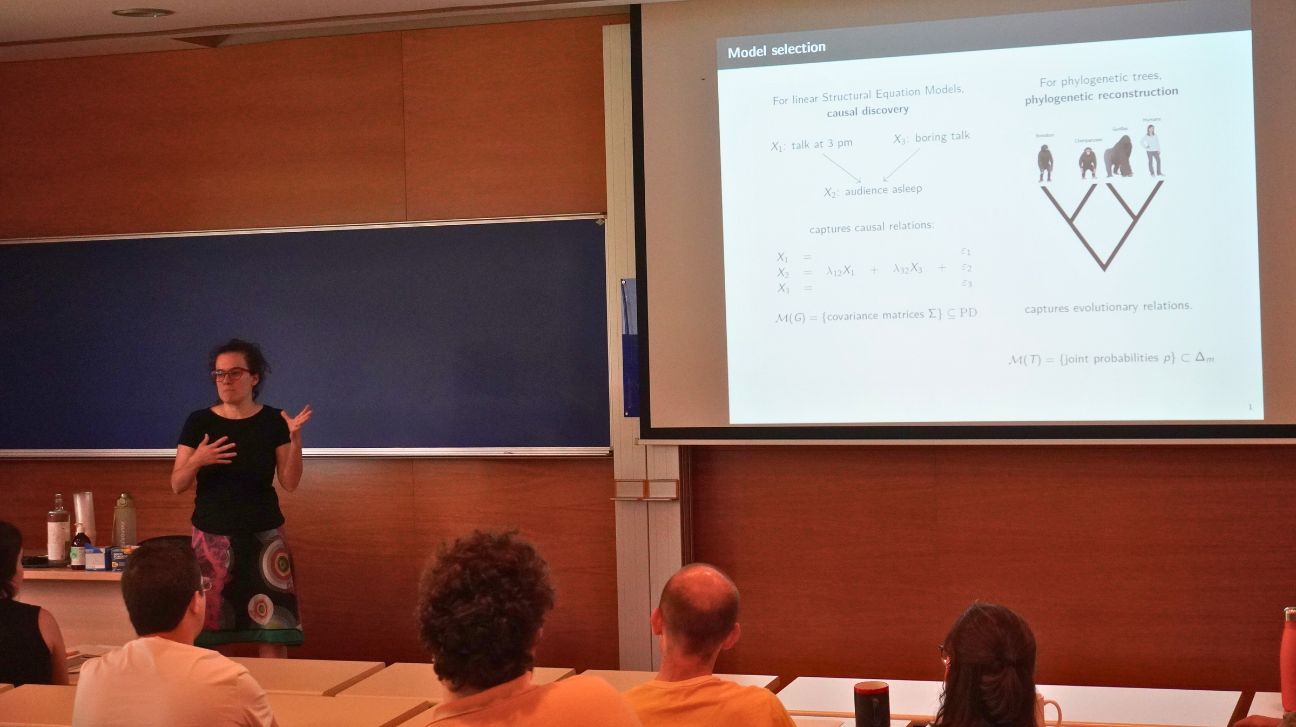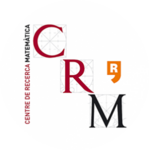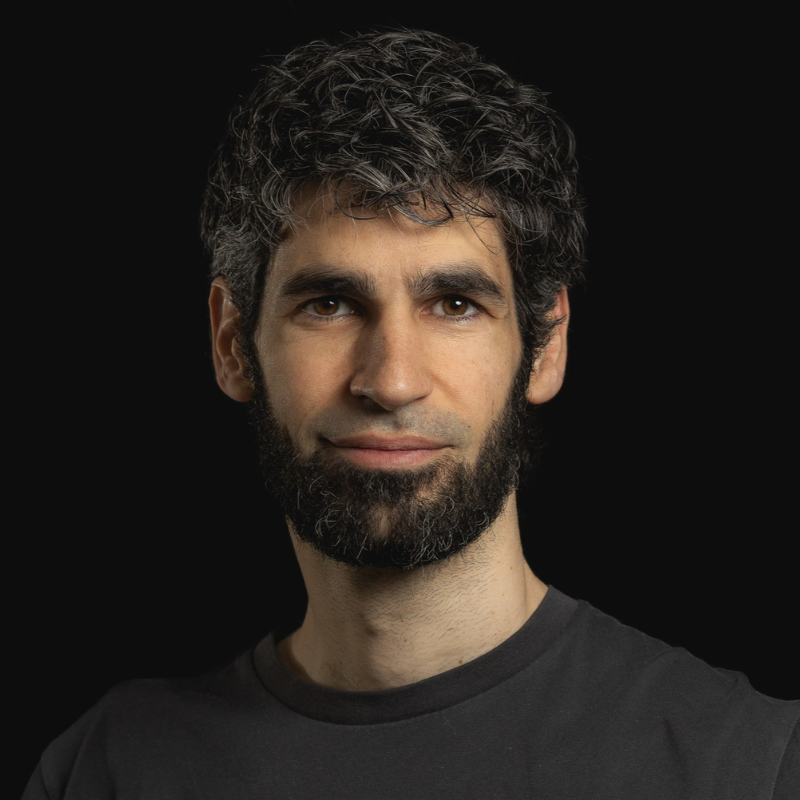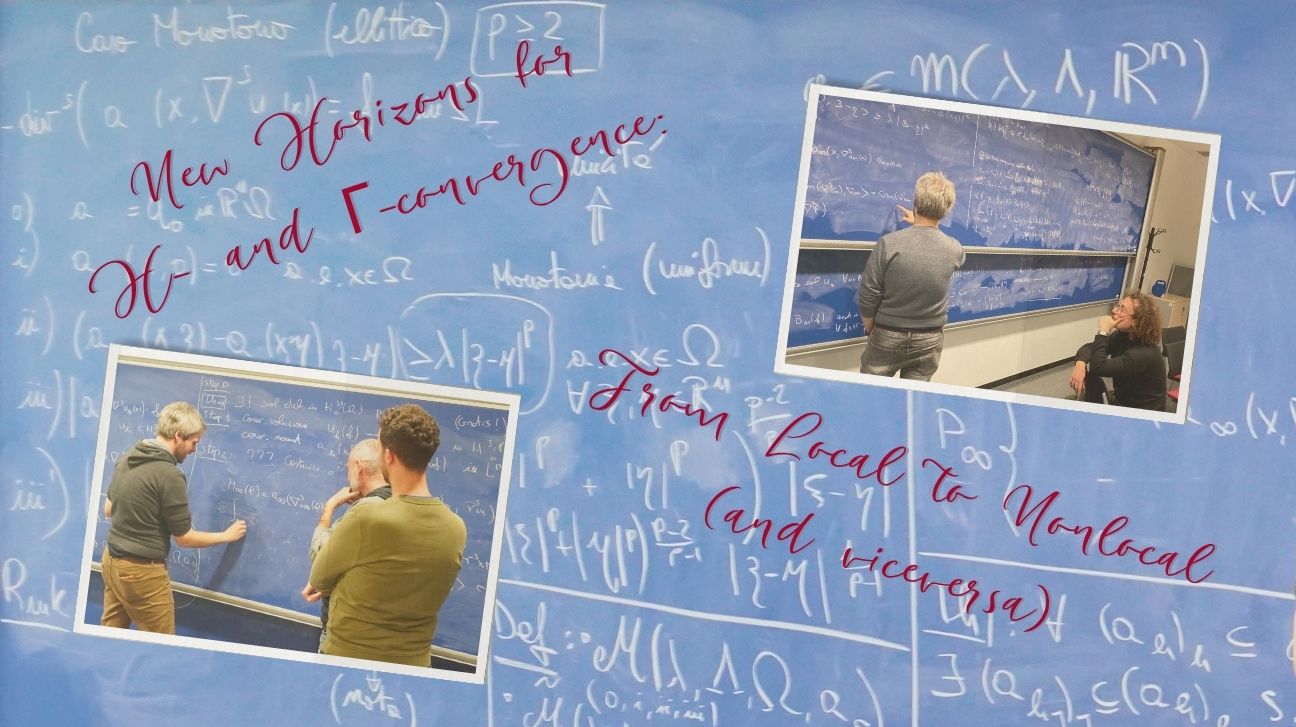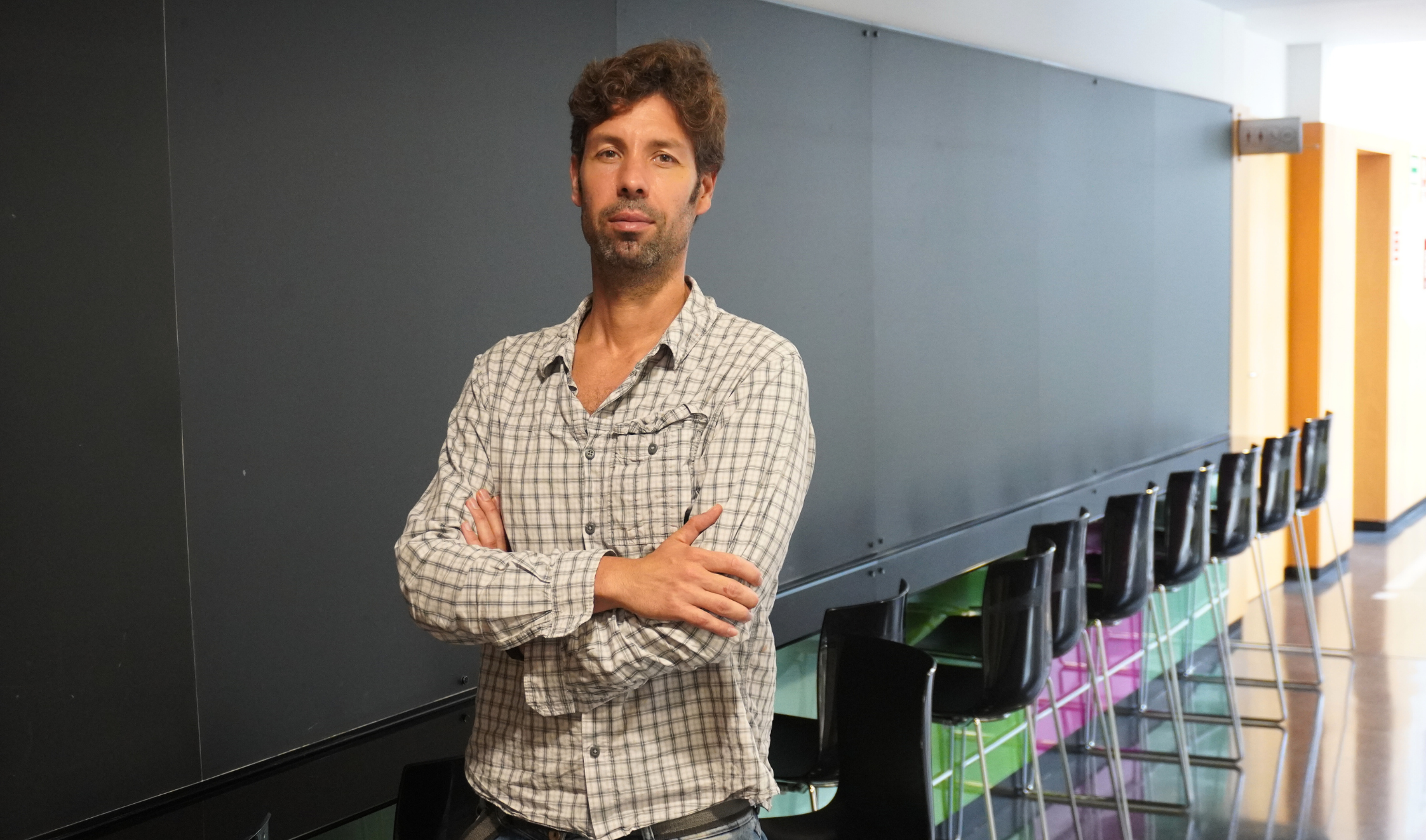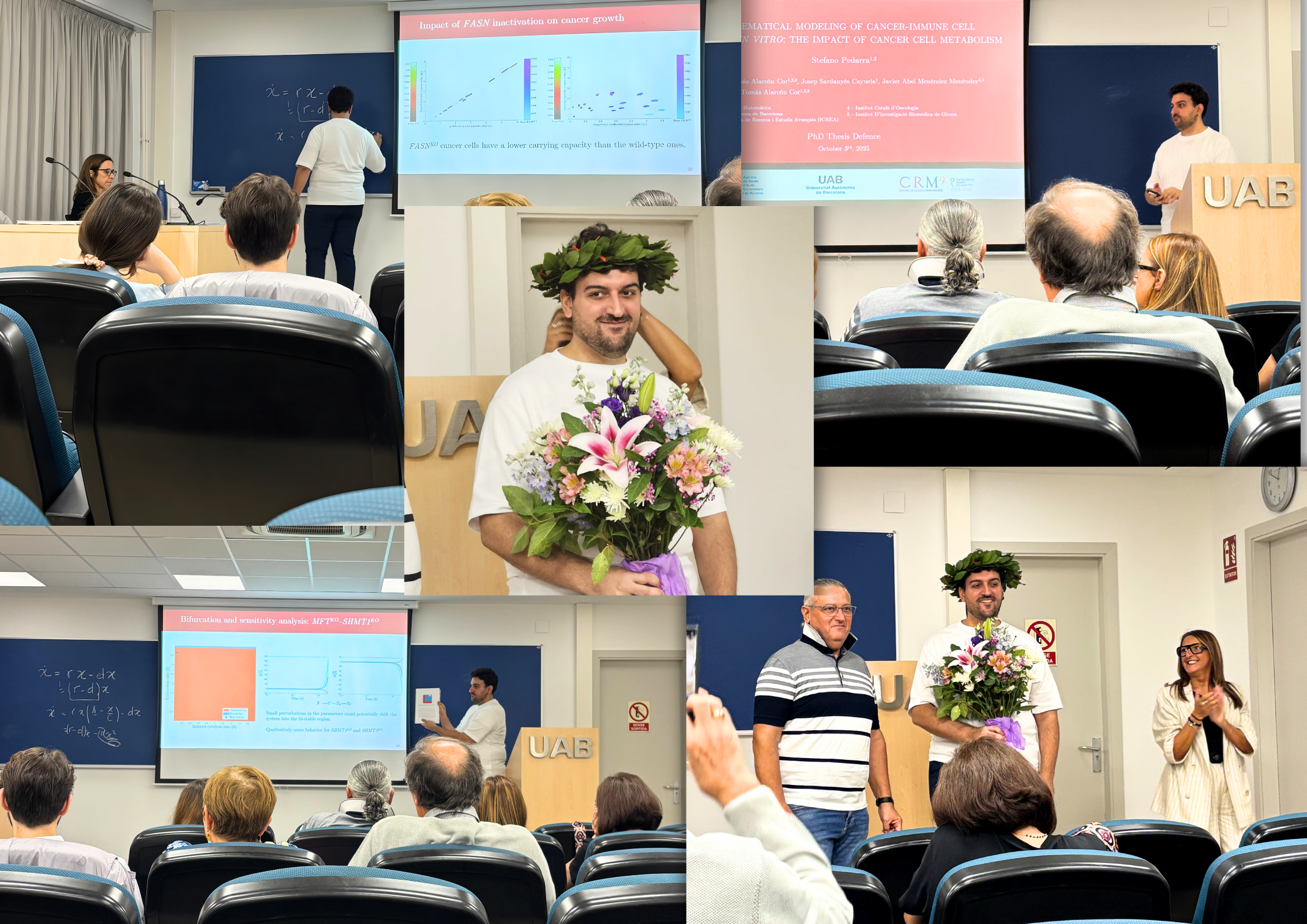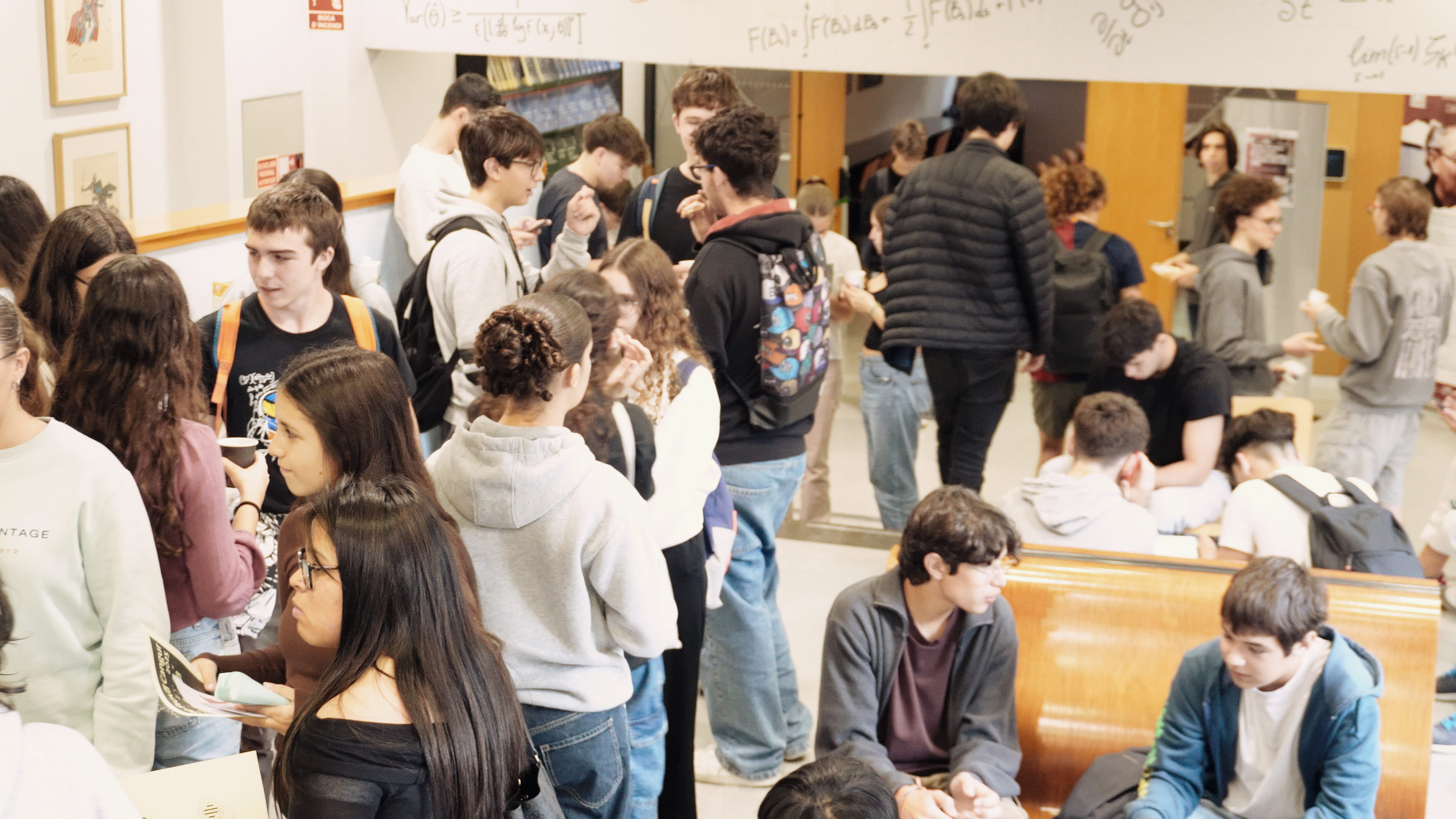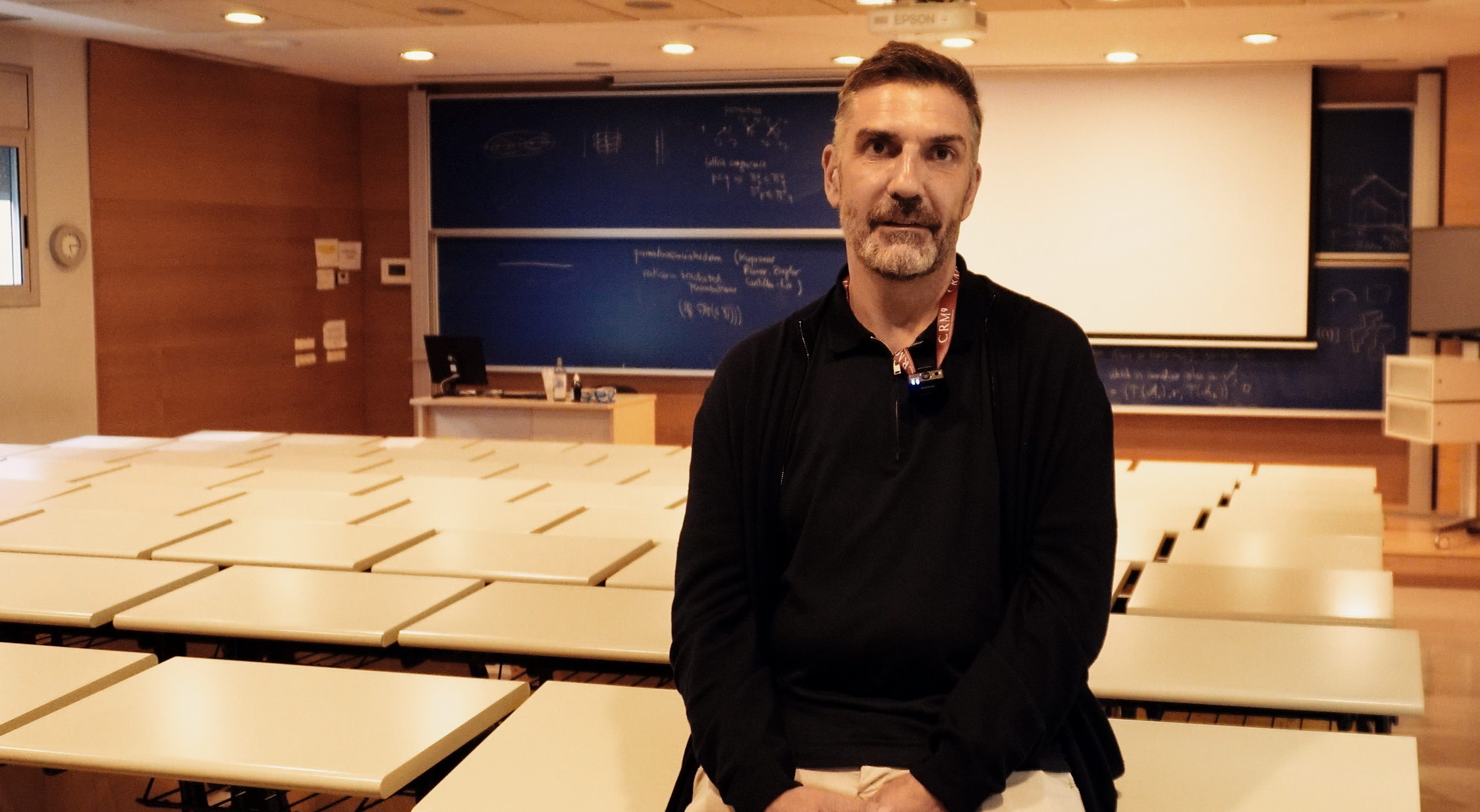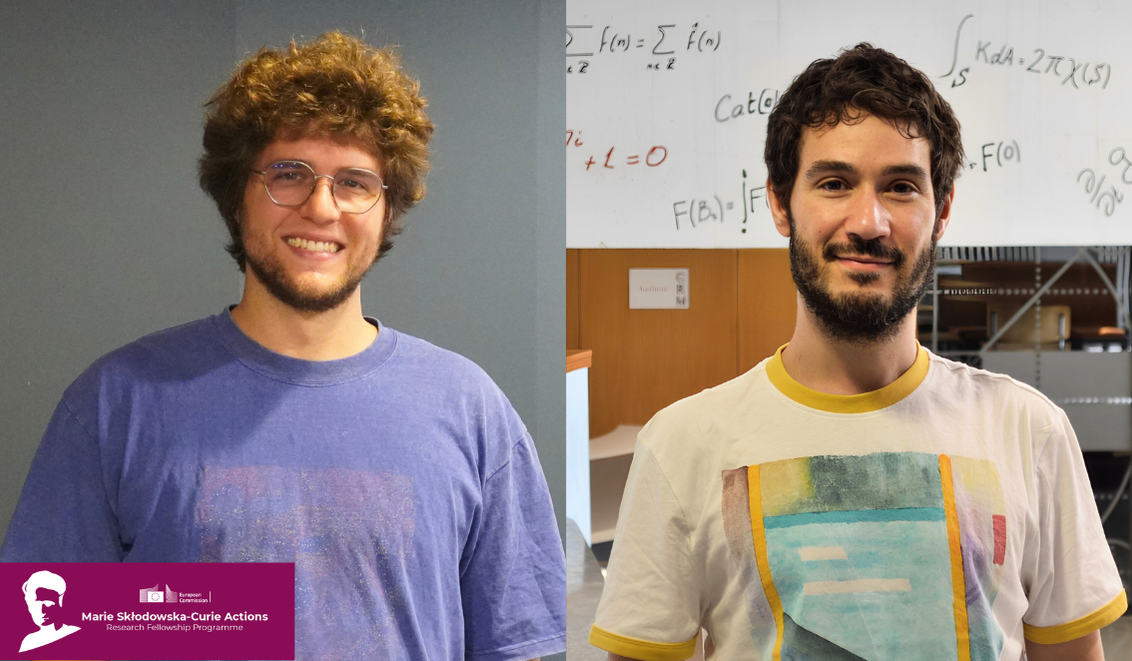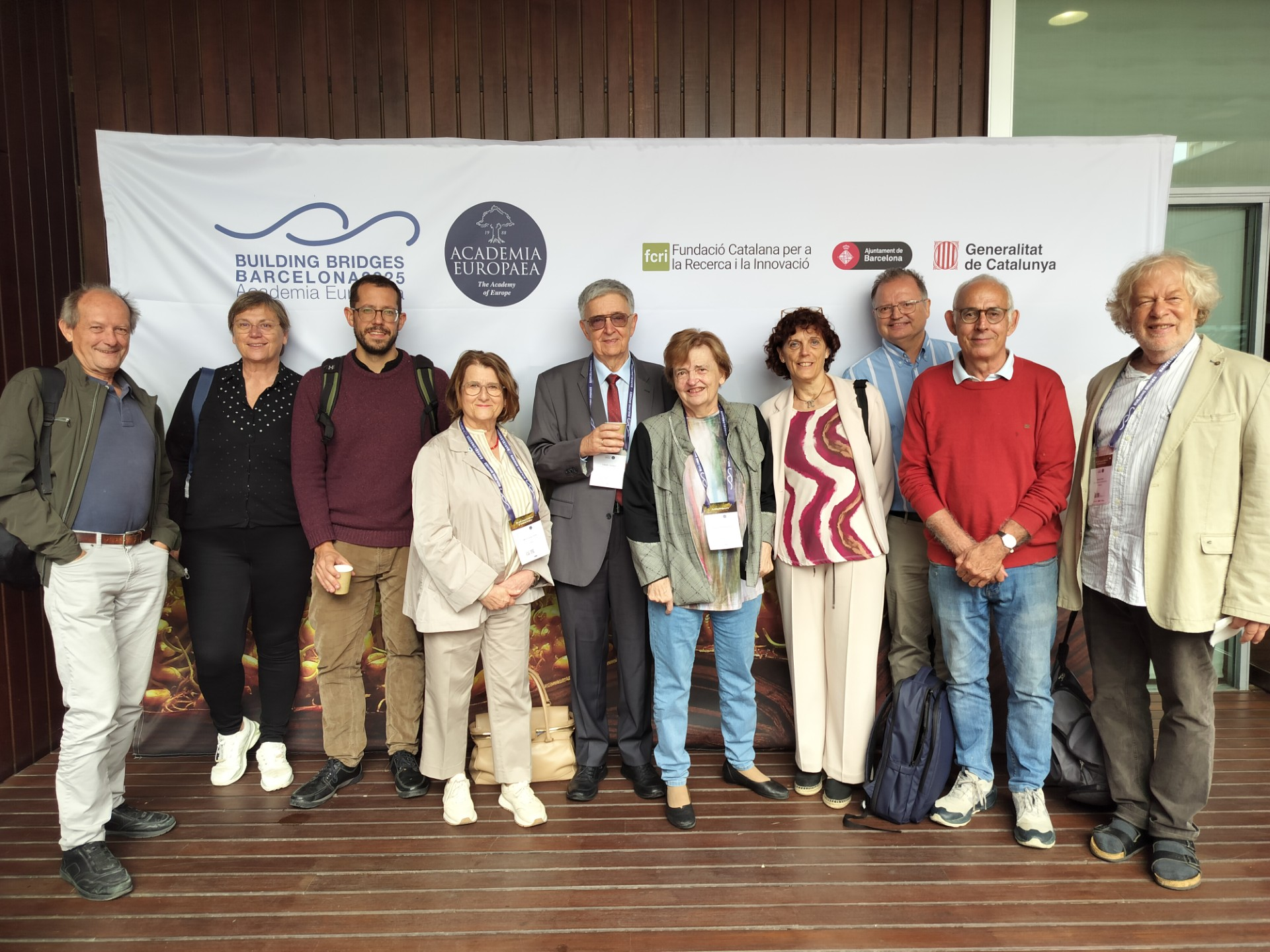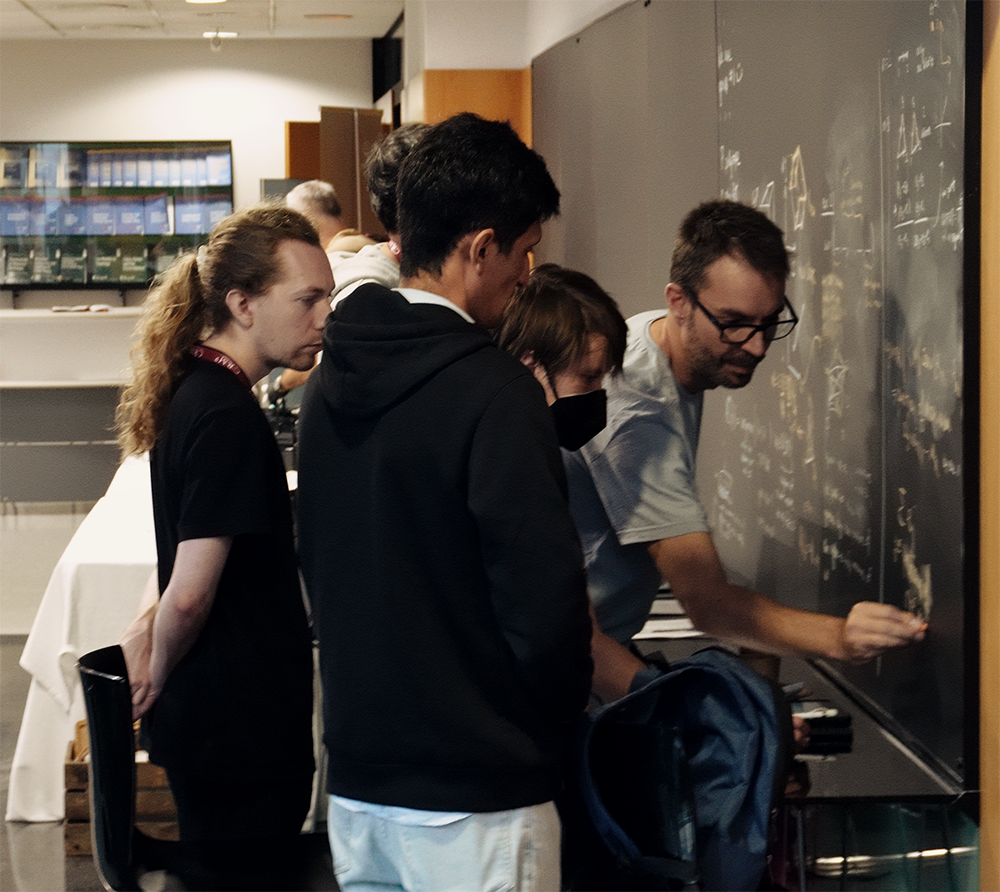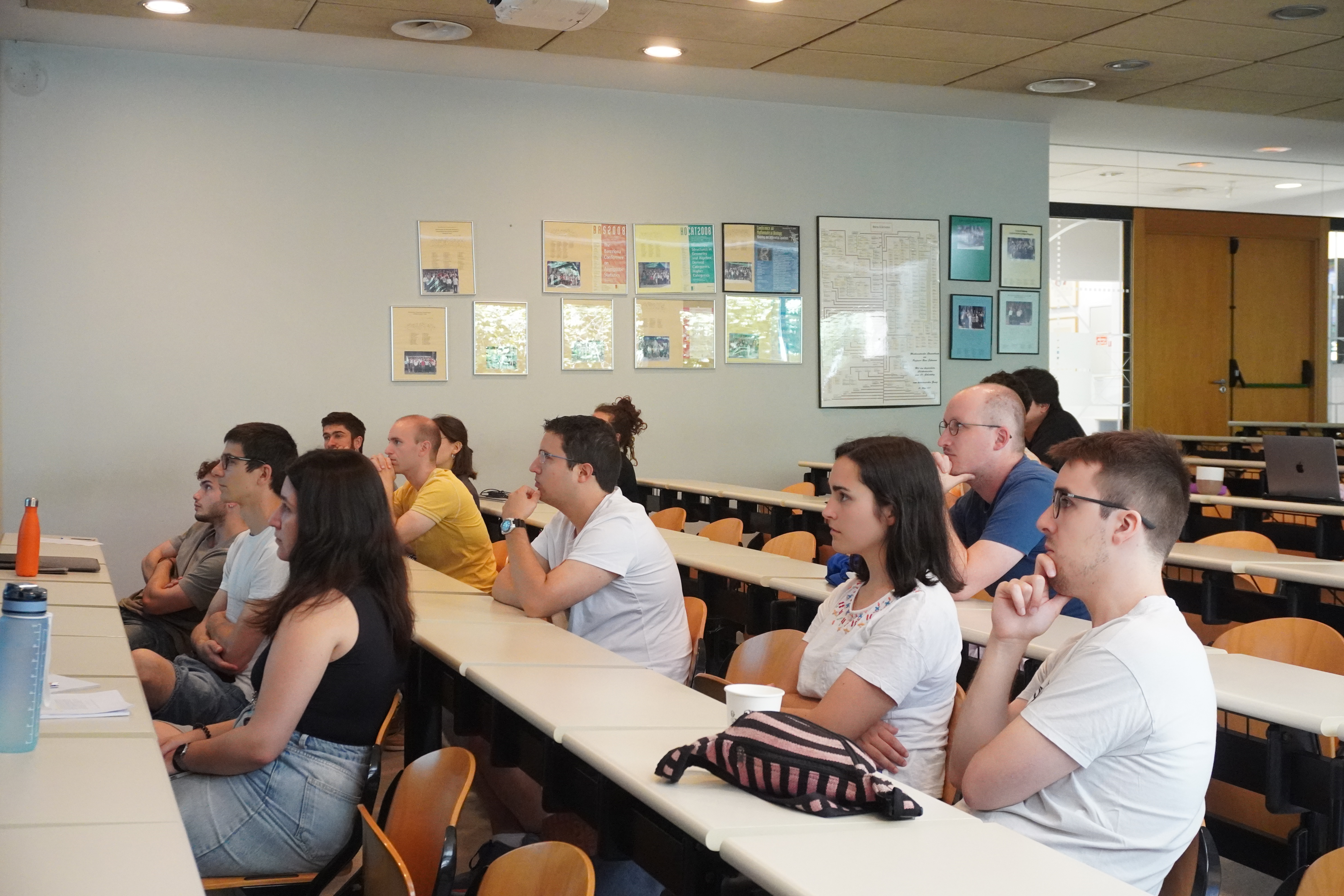
Four young researchers (S. Dhyr, A. Garcia, L. Unamuno and R.Homs) at CRM present their work in geometry, neuroscience, environmental statistics, and algebraic methods in the final SIJIMat session of the academic year.
On June 12, the Centre de Recerca Matemàtica (CRM) hosted the closing session of the SIJIMat seminar, a space designed to foster interaction among early-career researchers at the center. This final event of the academic year was a celebration of emerging mathematical talent, featuring accessible presentations and a collaborative atmosphere.
Throughout the year, SIJIMat has provided a platform for PhD students and postdoctoral researchers to share their work in an engaging and interdisciplinary format. The closing session brought together four young researchers who presented brief talks on their current projects:
- Søren Dhyr, PhD student at the CRM, gave a visual introduction to cosymplectic geometry, a branch of mathematics that studies three-dimensional spaces built from stacked planes. By adding a metric, one can analyze how angles and lengths change when moving between these planes, leading to a notion of “energy” associated with the structure. Without assuming prior knowledge of differential geometry, Dhyr guided the audience through this geometric world and introduced a recent joint work with Ángel González-Prieto, Eva Miranda, and Daniel Peralta-Salas, which investigates when this energy is minimized.
- Alexandre Garcia, also a PhD student, explored the phenomenon of bistable perception, where a single stimulus can lead to two mutually exclusive interpretations. Although perception is a fundamental brain process, the mechanisms behind this bistability remain unclear. Alexandre presented a mathematical framework developed to study these mechanisms and explained how the team validates its predictions using experimental data.
- Leire Unamuno, research technician at the CRM, focused on the link between air pollution and mental health, particularly in children and adolescents. She presented an ongoing project that investigates this association across Catalonia, explaining the general idea behind the spatio-temporal model they use and how it is implemented. Her talk highlighted the intersection of statistics, environmental health, and social impact.
- Roser Homs, Beatriu de Pinós postdoctoral fellow, introduced the field of Algebraic Statistics, which applies tools from algebraic geometry, commutative algebra, combinatorics, and computational algebra to statistical problems. Her talk focused on graphical models—statistical models where a graph encodes dependencies among random variables. She showcased a range of applications, from reconstructing phylogenetic trees to causal discovery, and concluded by addressing a fundamental question: how much data is minimally required for reliable statistical inference?
The session was a vivid reflection of the diversity and dynamism of the CRM research community. Beyond the scientific content, it strengthened connections among researchers and celebrated the collaborative spirit that drives mathematical discovery.
|
|
CRM CommNatalia Vallina
|
Xavier Ros-Oton among the 65 most cited mathematicians in the world
ICREA professor at the Universitat de Barcelona and CRM affiliated researcher Xavier Ros-Oton appears on Clarivate's Highly Cited Researchers 2025 list, which this year reinstates the mathematics category after two years of exclusion.Citations are a strange way to...
New Horizons for H- and Γ-convergence: From Local to Nonlocal (and viceversa)
The researchers Maicol Caponi, Alessandro Carbotti, and Alberto Maione extended the H- and Γ-convergence theories to the setting of nonlocal linear operators and their corresponding energies. The authors were able to overcome the limitations of classical localization...
Diego Vidaurre joins the CRM through the ATRAE talent programme
Diego Vidaurre has joined the Centre de Recerca Matemàtica through the ATRAE programme, bringing his expertise in modelling spontaneous brain activity across multiple data modalities. His work focuses on understanding how the brain’s intrinsic dynamics shape...
El CRM a la Setmana de la Ciència: una ruta entre dones, formes i pensament
El CRM va participar en la 30a edició de la Setmana de la Ciència amb una ruta guiada que va combinar les biografies de dones matemàtiques amb obres d'art del centre, connectant ciència, història i creació artística.El 12 de novembre, el Centre de Recerca Matemàtica...
Stefano Pedarra Defends his PhD Thesis on the Interaction between Tumour Cells and the Immune System
Stefano Pedarra has completed his PhD at the Centre de Recerca Matemàtica with a thesis exploring how tumour-cell metabolism shapes the immune system’s ability to fight cancer. His work brought mathematics and biology into direct conversation, from building models to...
Els estudiants participants a la prova de preselecció de Bojos per les Matemàtiques visiten el CRM
La prova de preselecció de Bojos per les Matemàtiques va reunir estudiants de tot Catalunya a la UAB i al CRM, amb presentacions a càrrec de Montse Alsina, presidenta de la Societat Catalana de Matemàtiques, Núria Fagella, degana de la Facultat de Matemàtiques i...
Jordi Mompart highlights the role of artificial intelligence in sport at the XIII GEFENOL-DIFENSC Summer School
The XIII GEFENOL-DIFENSC Summer School gathered over thirty researchers from across Europe to explore how statistical physics helps explain complex phenomena in biology, ecology, networks, and social systems. In his closing lecture, Jordi Mompart (UAB) examined how...
Critical Slowing Down in Genetic Systems: The Impact of Bifurcation Proximity and Noise
An international collaboration including researchers from the Centre de Recerca Matemàtica (CRM) has shown that when several bifurcations occur close to one another, their interaction can dramatically amplify critical slowing down effect - the progressive slowdown of...
Two CRM researchers begin their Marie Skłodowska-Curie fellowships
Gustavo Ferreira and Tássio Naia, CRM postdoctoral researchers and new Marie Skłodowska-Curie fellows. Gustavo Ferreira and Tássio Naia, who joined the CRM in 2023 through the María de Maeztu programme, have started their Marie Skłodowska-Curie postdoctoral...
Matroid Week at CRM: A Collaborative Dive into Combinatorial Geometries
From October 13 to 17, 2025, the CRM hosted Matroid Week, a research school on combinatorial geometries and matroid theory. Courses by Laura Anderson and Geoff Whittle explored intersection properties and structural emergence in matroids. The event fostered deep...
László Lovász receives the 2025 Erasmus Medal in Barcelona
Mathematician László Lovász received the 2025 Erasmus Medal from the Academia Europaea yesterday at the PRBB in Barcelona, where he delivered the lecture “The Beauty of Mathematics”. Renowned for his work in graph theory and discrete mathematics, Lovász has shaped...
Combinatorial Geometry Takes Shape at the CRM
For one week in early October, the Centre de Recerca Matemàtica became a meeting ground for the world of combinatorial geometry. The Polytope Week research school gathered more than fifty participants from three continents to study the interplay...

